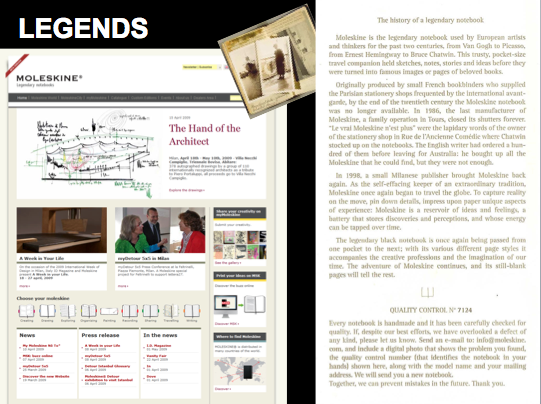
by admin | Feb 17, 2011 | Blog, Strategy
Why are today’s smart marketers talking about Brand Promise rather than the all too familiar USP – Unique Selling Proposition?
The answer is simple. The low barriers to entry in most industries created by the free and almost instant flow of information, resulting in the hyper-competitive nature of today’s marketplace means there are very few unique products and services and if they are unique to begin with they do not stay so for very long.
This paradigm shift has repercussions for for every modern enterprise. It means that brand owners and marketers must create unique experiences for their customers and communicate them clearly to their prospects. Because these experiences are what will differentiate them from their competitors. To do so they must work out what it is that they can promise their customers.
Product, Price, and Place (distribution) can be easily copied by competitors, which is why marketers invest much time and budget into Promotion (Communication). What can not be copied is the relationship, the emotional connections you develop with your customers. And like all relationships, they require consistent and clear communication.
Brand Promise must be:
- A Benefit that is relevant and important to the target market.
- A benefit that is different from the competitors.
- A benefit that your company is able to deliver.
The benefit may be:
- Functional
- Emotional
- Experiential
- Self-Expressive
Brand Promise is ideally expressed as:
Only (name of your brand) delivers (relevant differentiated benefit) to (target customer).
The Brand Promise is a critical ingredient that assists marketers work out the Positioning Statement.

by admin | Feb 16, 2011 | Blog
You can buy a notebook at your local newsagent or office supplies store for $2-$4, but a large enough number of people in the creative industries choose to pay up to 10 times that for the legendary Moleskin.
by admin | Feb 16, 2011 | Blog
Many of the older brands have rich histories that make them “legendary”, however new and small brands can benefit similarly if they follow the rules of being interesting and authentic.Keep in mind these “legends” were also just a small business, with nothing more than the vision and passion of their founders.
Did Coca Cola really invent Santa Claus? Maybe not but it certainly made him their brand ambassador and part of our popular culture for ever!

by admin | Feb 16, 2011 | Blog

Cover via Amazon
People love stories from children’s fairy tales to books and movies. A story is more memorable than a straightforward message. A story is easy to re-tell and pass on to other consumers, hence providing your brand with more Word of Mouth Marketing opportunities.
A brand story needs to be:
- Real and authentic
- Colourful and interesting
Advertisements are nothing more than stories with the best ones engaging their audience. Famous brands such as Virgin and Apple have real stories surrounding their founders and form an important element of their strategy.
Most common marketing stories:
Blake Snyder (professional screenwriter) has story scenarios that align to Maslow’s Hierarchy of needs:
- Physical Needs
- Safety Needs
- Social Needs (Buddy Love & Rights of Passage)
- Self Esteem Needs (Fool Triumphant & Superhero)
- Cognitive Needs (Everyman v Big Brother)
- Aesthetic Needs (Look good, Feel Good)
- Self Actualisation (Search for Meaning & Personal Salvation)
Gerald Zaltman, author of “How Customers Think” and Professor at Harvard Business School identifies deep metaphors in the minds of consumers in “Marketing Metaphoria”:
- Balance
- Transformation
- Journey
- Container
- Connection
- Resource
- Control
and Christopher Booker’s book, “Seven Basic Plots – Why We Tell Stories” (which took him 35 years to write) has the following:
- Overcoming the monster: Defeating a force which threatens safety, existence, success – David v Goliath
- The Quest: A group in search of something (who may find it or something ‘better’)
- Journey and Return: The hero journeys away from home and comes back (having experienced something and maybe having changed for the better)
- Comedy: Not necessarily ‘haha’ funny. a misunderstanding or ignorance is created that keeps parties apart, which is resolved, by the end, bringing them back together
- Tragedy: Someone, tempted (vanity, greed, etc), becomes increasingly desperate, or trapped by their actions, until the climax where they usually die
- Rebirth: Hero is captured or oppressed (a living death existence) until they are miraculously freed
- Rags to Riches: Overcoming a state of poverty, want, and/or need.
By telling your brand story you can differentiate your business and form a stronger connection with your customers and prospects. By understanding why you started the business, or for example why you named it in a certain way, customers will feel like they know you and understand you. After all it is hard to connect with someone you don’t understand.


by admin | Feb 16, 2011 | Blog

You can buy a notebook at your local newsagent or office supplies store for $2-$4, but a large enough number of people in the creative industries choose to pay up to 10 times that for the legendary Moleskin.








Recent Comments